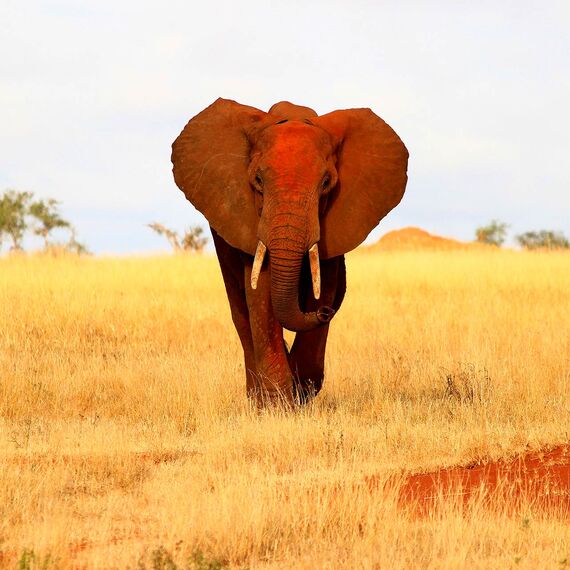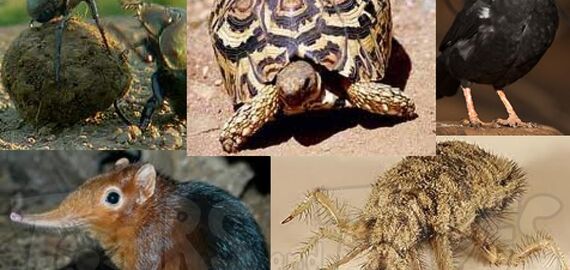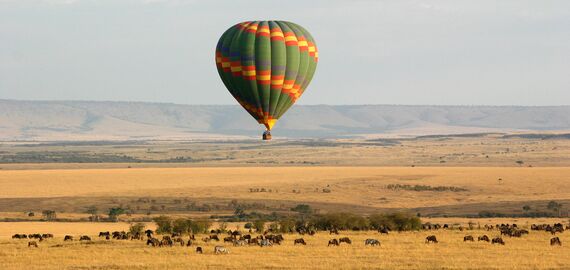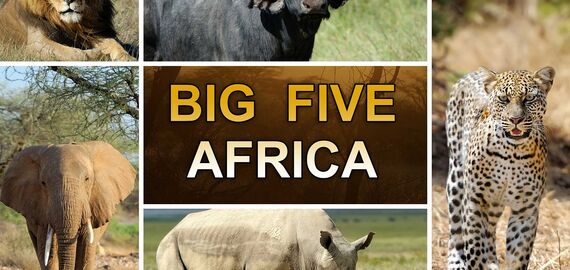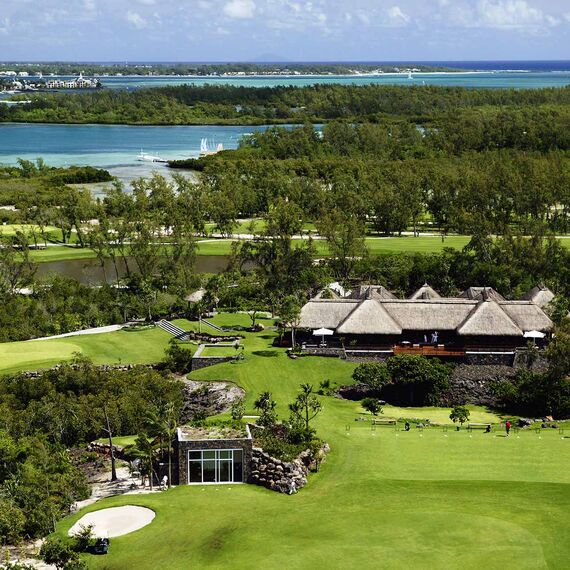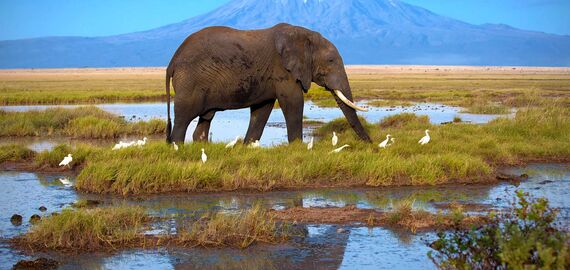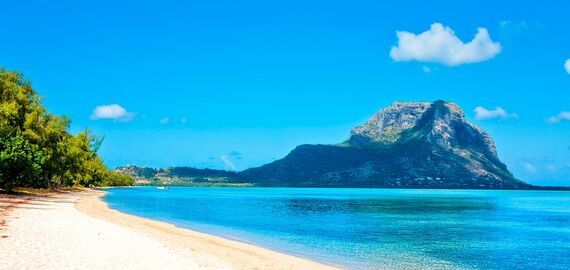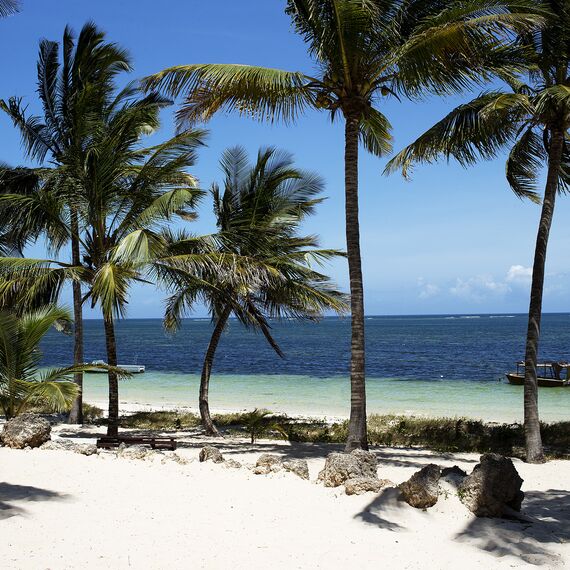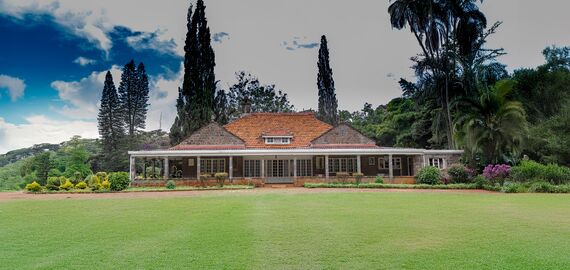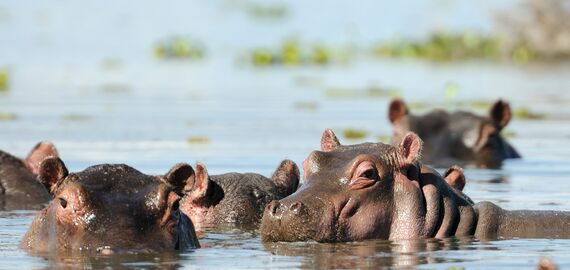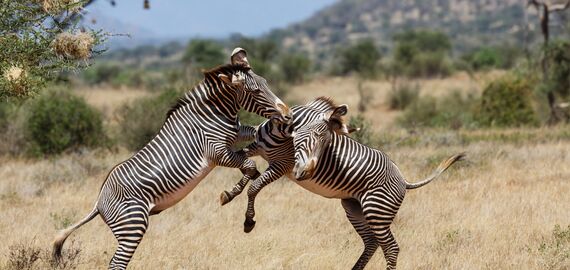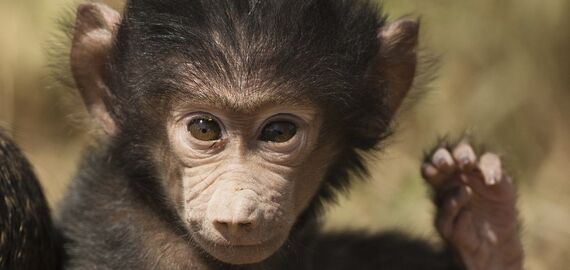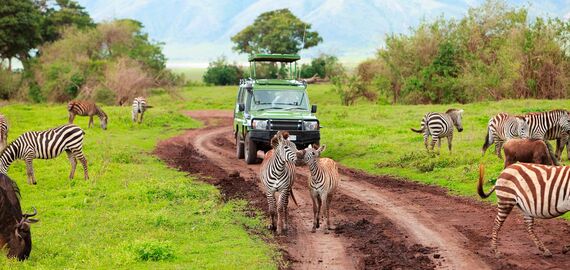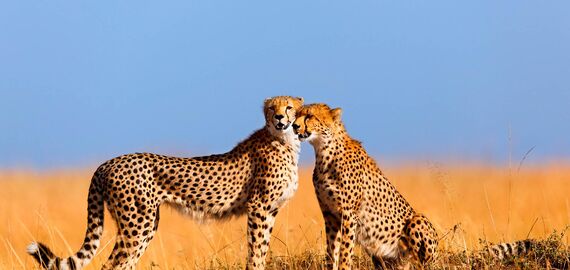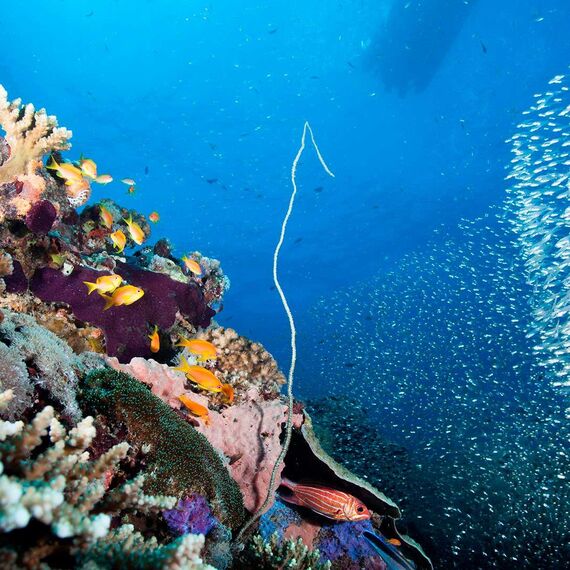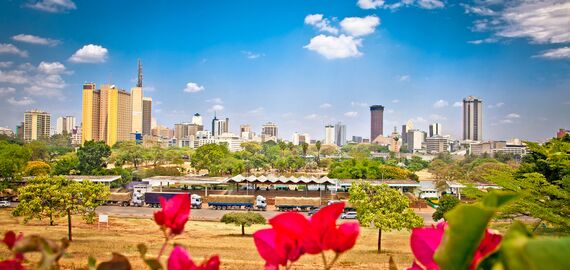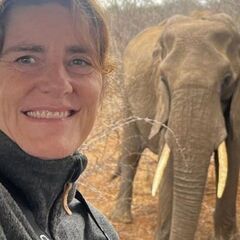Kenyan Safaris are amongst the best in the world!
Kenya can be regarded as the birthplace of the photographic safari, and offers outstandingly varied landscapes, vegetation types and animal life. This is because many species from the north, west and south all meet together around the central highlands. This is also where you find the gateway to Kenya, its capital city Nairobi. Nairobi is the second biggest city in East Africa, but it boasts the biggest airport in the whole region. Here it is possible to enjoy the country’s rich and varied nature on a relatively short safari as the distances between the world famous grassy savannahs of the Masai Mara, the dry but beautiful savannah bushland of the north, the central highlands, the lakes of the Rift Valley and the impressive national parks of the south east, are all reasonably reachable and the infrastructure is good.
Visit world famous safari areas
Most safaris in Kenya include the world famous Masai Mara in their itinerary, as this reserve with its rich grasslands offers an uncommonly rich multitude of animals of many different species all year round. The lakes of the Rift Valley, which cuts right through the highlands, offer wonderful scenery and some great adventures, the beautiful reserves of the north such as Samburu, Buffalo Springs and Shaba with their savannah bushland and more unusual animals are spread out north of Mount Kenya, which with its jagged peaks, is Africa’s second highest mountain, 5,199m in height. In the highlands around the mountains you can stay the night in a number of lodges, built in clearings in dense forest, where you can watch the wildlife as they visit waterholes, which are illuminated at night. The parks of south east Kenya, of which Tsavo West and East are Kenya’s biggest, offer varied nature and in many areas one of the most famous views in the world, namely the snow covered peak of Kilimanjaro. Although Africa’s highest mountain is actually in Tanzania, near the border with Kenya, the famous classic mountain view is actually best from Amboseli National Park on the Kenyan side.
A fantastic beach coast
The fantastic coastline of the country around the port of Mombasa has classical white, palm fringed beaches, and offers many different activities, including snorkelling and scuba diving on the coral reef just offshore from the beaches.
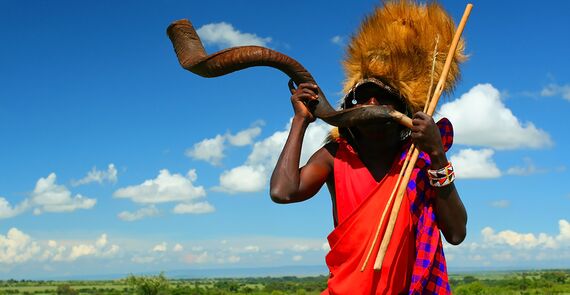
KENYA HIGHLIGHTS
- The Masai Mara, with its huge number of animals, grassy savannah and the life giving waters of the Mara River.
- The Rift Valley lakes with their flocks of pink flamingos and the snorts of wallowing hippos
- The hot, dry and beautiful parks of the north, with their many unusual animals
- Kilimanjaro, seen from the parks of the southeast, with acacia trees and wild animals in the foreground
- Tropical beach life on the white, palm fringed sands of the Mombasa coast
Practical information for tours to Kenya
Passport & visa regulations for entry into Kenya:
On arrival in Kenya you must pass through passport and visa control.
All immigration personnel speak English fluently.
Passport Regulations:
- Your passport must be valid for at least 6 months after your expected arrival back home.
- Your passport must have at least 3 blank pages available.
Visas:
Visiting foreign nationals from most countries need a visa to enter Kenya.
Application for a visa on arrival (recommended):
We recommend that you first apply for a visa on your arrival at the airport in Kenya. It can be an advantage to fill in the required visa application form in advance, which you can download here.
We have prepared a step by step guide on how to apply for a visa electronically:
- Go to https://account.ecitizen.go.ke/visitor-registration
- Complete the user registration form
- You will receive an email confirmation, with a link to confirm your registration. Once you have confirmed your user registration you can start the application process.
- You must upload a passport photograph (dimensions 500 pixels times 500 pixels). If you don’t have one, you can have one taken by your local photographer. You can have it downloaded onto a USB stick in the shop or have it sent to you by email.
- You must now click on "Department of Immigration services".
- Click on the blue button ”Make Application”
- Choose: "Kenyan Visa"
- Choose ”Apply for a single entry visa”
- Complete the application form.
- Pay with your credit card
- Wait for your confirmation, which you should receive by mail within 14 days
- Download and print your E-visa
- Show your printed visa to immigration control in Kenya
On your flight to Kenya you will be given an immigration form that you must complete and give to immigration together with your visa or visa application. Remember to carry a ballpoint pen in your hand luggage.
Visa cost:
The cost of applying for a visa on arrival is USD 50,- pr. adult, which must give the exact amount. Dollar bills must NOT be older than 2006.
The cost of issuing an online e-visa is USD 50,- per adult.
Visas for children under 16 years of age are free of charge
Recommended vaccinations for travellers visiting Kenya:
We recommend that you receive vaccinations against the following diseases before departure:
- Diphtheria
- Yellow fever
- Hepatitis A
- Tetanus
The information given above is for guidance only, Askari Tours recommend that you always talk to your own doctor or vaccination clinic.
You can read more about vaccinations at www.vaccines.org
Medicines when visiting Kenya:
We recommend you bring any medicines prescribed to you by your doctor with you.
We also recommend you bring along painkillers and anti-diarrhoea tablets.
There are pharmacists in the larger towns, but naturally not in thinly populated districts, so it is important you bring along what you need from home.
Malaria prevention:
We recommend you start a course of malaria preventative medicine before your departure for Kenya, and continue it during your tour and after you return home.
Please follow the instructions given with the product you use carefully.
We do not recommend the product Lariam, as it has given a number of our guest some very unpleasant side effects. Many of our guests have been very satisfied with the product Malarone, which also gives a broad coverage against malaria.
We always recommend you seek advice from your own doctor or vaccination clinic about malaria prevention.
Bagage regulations on tours to Kenya:
On most of our tours to Kenya it is important you pack your luggage in a soft bag or case. Hard cases are not allowed, as it is not possible to pack them into the safari vehicles.
You are allowed to bring along 1 x bag/case plus 1 x small rucksack/camera bag per person.
As the amount of space available in the vehicles used is limited, we request you limit the amount of clothing you bring along, as it will be possible to get laundry done at a number of places on tour.
On small aircraft flights to/from the savannah:
If you have booked a tour which includes flights to or from the savannah, you may bring along 1 bag or case of max. 15 kg. plus 1 Item of hand luggage.
It is very important that you bring soft bags or cases, as hard cases cannot be packed efficiently in small aircrafts, which might mean in the worst case scenario that the pilot will refuse to bring along your luggage.
Packing list for tours to Kenya:
Limit the amount of luggage you bring with you as there is only a limited amount of space available in the vehicles, and it will be possible to get your clothes washed at a number of places on tour.
We recommend that when you are on safari you bring along clothes in nature’s own colours, such as shades of khaki, sand, green and brown.
When you are staying on the coast we recommend light colours that will reject the heat from the sun.
Don’t bring clothes made from artificial fibres as these are rarely comfortable to wear in a hot climate. We do recommend clothes made of cotton.
It can be very cool in the evening, at night and early in the morning, so it is important you pack some warm clothing.
Causal clothing is the norm in Kenya, but it is usually customary for men to wear long trousers and not shorts at dinner.
Most of the hotels on Kenya’s coast, do not allow you to wear swimwear in their restaurants.
We recommend that you bring the following with you on your tour:
- 1 pair of good outdoor shoes
- 1 pair of sandals or flip-flops
- 1-2 long sleeved sweaters
- 1-2 pairs of long outdoors trousers (we recommend zip-off trousers)
- Shorts
- T-shirts / shirts
- Bathing costume
- Socks and underwear
- Sun hat / cap
- Sunglasses
- Mosquito repellent
- Sun cream/aftersun lotion
- Camera and plenty of memory cards
- Small rucksack which can be brought along on safari drives
- Ballpoint pen
- Travel adaptors
Currency in Kenya:
The local currency in Kenya is the Kenyan shilling. You cannot buy Kenyan shillings abroad, you can first buy them on your arrival in Kenya. We therefore recommend that you bring US$ with you from home, as these can be exchanged all over Kenya.
On arrival in Kenya we recommend you exchange your dollars for Kenyan shillings.
Please note that only dollar bills printed after 2006, can be used in Kenya.
How much cash should I bring with me on holiday?:
Most of your expenses will already be taken care of when you book a tour to Kenya with Askari Tours, therefore you will only need to bring a limited amount of cash.
In most hotels and lodges in Kenya you can pay for drinks and similar items with an international credit card.
Please note, it is usually NOT possible to withdraw cash or exchange currency in most hotels/lodges but you can withdraw cash from ATM’s in the airport and most major cities.
You should bring along enough cash to be able to pay for the following on holiday:
- 50 USD for your visa on arrival
- Kenyan shillings for tipping
- Kenyan shillings to pay for excursions and souvenirs
It is possible to withdraw cash in Nairobi, Mombasa as well as some of the larger towns you will pass en route while on safari.
What do food and drinks cost?:
- 1.50 – 2.75 € for a soft drink or beer
- 15 – 20 € for a bottle of wine
- 7.50 – 15 € for lunch on the Kenyan coast or Nairobi
Tipping while on holiday in Kenya:
It is normal to tip for services received in Kenya, but of course it is not compulsory. We recommend you give a tip if you are satisfied with the service you have received.
Drivers & guides:
8 – 10 USD per person per safari day to driver / guide.
Tips should be given on the last day of your safari, before you are taken to the airport.
Hotels/lodges & restaurants:
In hotels/lodges you will often find a box for tips in the reception, we recommend that you leave 3-4 USD per person per night.
By placing your tip in the box in reception you know that the money you leave will be divided equally between all the hotel’s staff.
In cafes and restaurants that are not a part of your hotel, we suggest that you leave around 10% of your bill as a tip.
We further recommend you give approx.1 USD per bag to the porter who carries your bag to your room at your hotel/lodge.
We recommend that as far as possible you leave tips in local currency but you can also use USD.
Buying souvenirs in Kenya:
There will be plenty of opportunties to buy some great souvenirs to remind you of your fantastic holiday. Popular items include beautiful figures carved from wood or soapstone, Masai spears and shields, jewellery, drums, basket work, leatherwork and different types of batik.
The quality of the items on offer can vary greatly, so we recommend that you always seek your guide’s advice, he will be able to tell you where you can find items of good quality.
Prices can vary greatly from place to place, and it is normal that you haggle over the price. Aim to bargain the asking price down by 30 – 50%, which would mean that both you and the seller get a good deal.
On the coast it is possible to by shells and other souvenirs produced from marine life. Do not buy them, as it is illegal to bring them back into Europe or the US.
Internet & mobile telephones in Kenya:
Mobile coverage in Kenya is very good, and you will find that there are very few places where you will not get a network connection.
But remember it is very expensive to use your telephone from home in Kenya. If you will need to make calls or use data etc. from your own phone during your stay in Kenya, we recommend you buy a sim card when you arrive at the airport.
Today most restaurants, hotels and lodges in Kenya offer WIFI and a good internet connection.
Electricity in Kenya:
Lodges and camps in Kenya have ”English” style plugs (type G), so we recommend you bring travel adaptors from home if necessary. A few places have adaptors you can use for hire/loan in reception.
Many lodges and hotels out in the savannah are powered by solar cells or generators, which are turned off at night and during the times the guests are out on safari. If you need to charge your camera etc. it is a good idea to ask at reception at which times this will be possible.
Time difference in Kenya:
Kenya is 2 hours ahead of CET, and 1 hour ahead of CET summertime.
Attractions
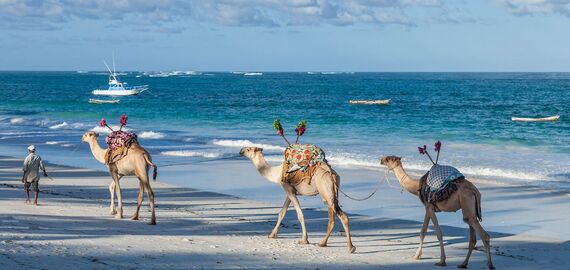
Wildlife in Kenya
Highlights:
- One of the most varied countries on the continent when it comes to animal life – as well as flora and landscapes
- Impressive numbers of nearly all of the classic African game animals, including the Big Five in the renowned Masai Mara
- Many unique mammals, birds and ecosystems especially in the north and around the lakes of the Rift Valley
- Experience giraffes and many wonderful elephants in Amboseli, with the beautiful Kilimanjaro mountain in the background
- Fine populations of both black and white rhino, especially in the highlands and around Lake Nakuru
- Coral reefs, fish and dolphins along the coast around Mombasa, plus a number of unusual monkeys and antelopes
The country has an impressive and exceptionally varied fauna with species with northern, western and southern distributions all appearing in the area around Kenya’s highlands. This fact means that Kenya, among other things, is a dream destination for ornithologists, it is one of the best countries in the world for seeing the highest number of bird species, in a relatively small area, over a short period of time.
Perhaps what Kenya is most famous for is the huge concentrations of classic game animals in the Masai Mara reserve in the south west of the country. Here you will find good, permanent, populations of the famous Big Five; Elephant, black rhino, buffalo, lion and leopard, together with many other iconic animals such as giraffe, hippopotamus, cheetah and hyena. From July to October the number of game animals is enormous, as the many animals taking part in the great migration, wildebeest and zebra in particular, stream into the Masai Mara from the Serengeti to the south. This district is also in a class of its own when it comes to the birds of the savannah, especially the birds of prey.
In Kenya, you can see different variants of many of the most popular animals, such as giraffe and zebra, depending upon whether you are in the Samburu reserve in the north, the central highlands in f. inst. Laikipia, near the lakes of the Rift Valley or on the grassy savannah to the south. The country is also home to important populations of both black and white rhino. In the northern part of the county you can find a number of more unusual animals, particularly some antelopes and birds, that are specialities of this part of Kenya, and easier to see here than anywhere else in the world. The largest national park, Tsavo, in south eastern Kenya, is home to the country’s biggest population of elephants. However, it must be said that photographing one of these giants, or even a giraffe for that sake, with Kilimanjaro in the background taken in Amboseli is perhaps a more famous and sought after motif.
Along the coast north and south of the large port of Mombasa, you can find a number of small national parks and reserves that are home to some rarities, including unusual monkeys, antelopes and birds. But the coast is probably most famous for the saline in the Indian Ocean itself, where the colourful fish and invertebrates of the coral reef fight for your attention with a number of species of dolphins.




